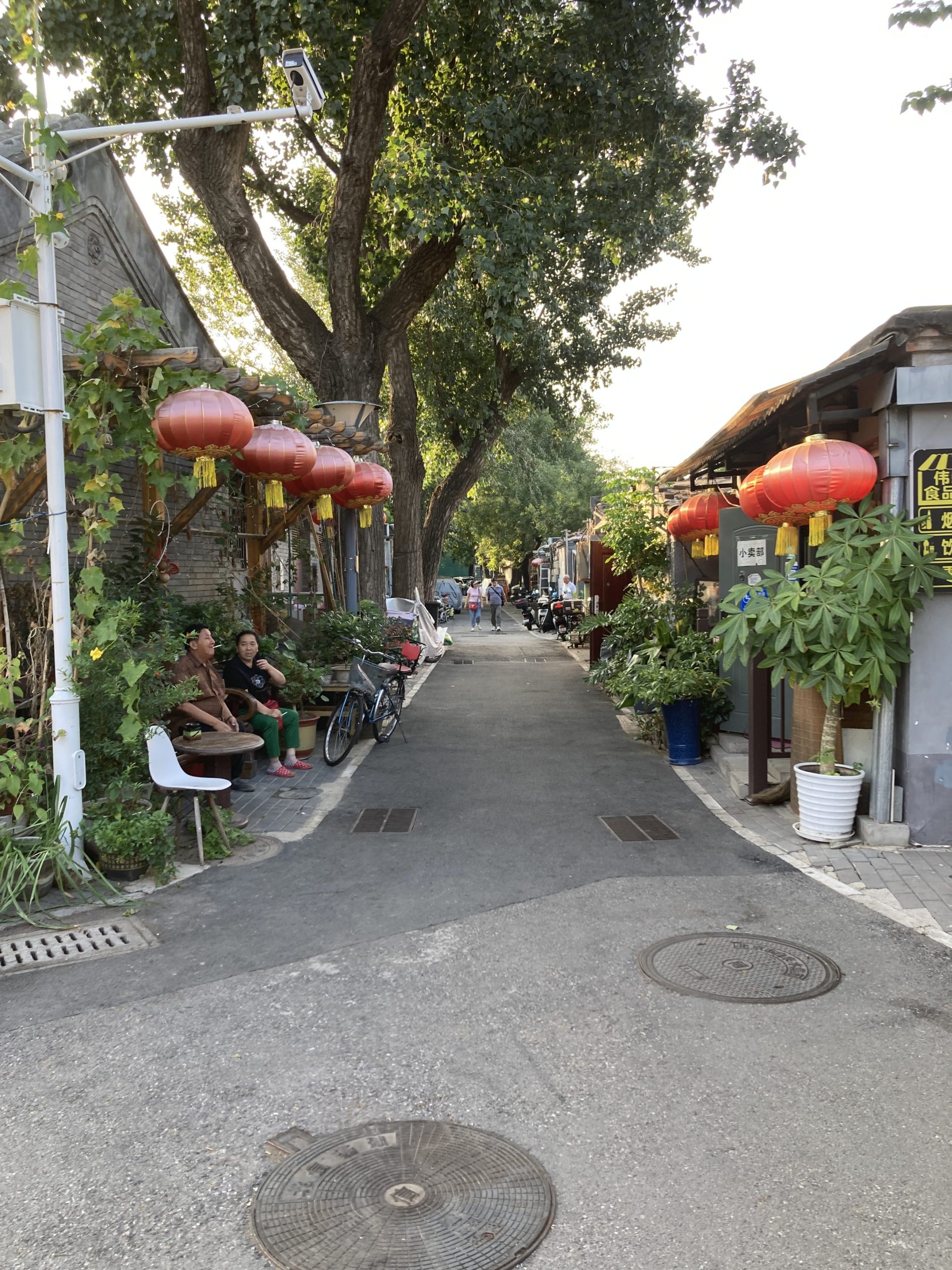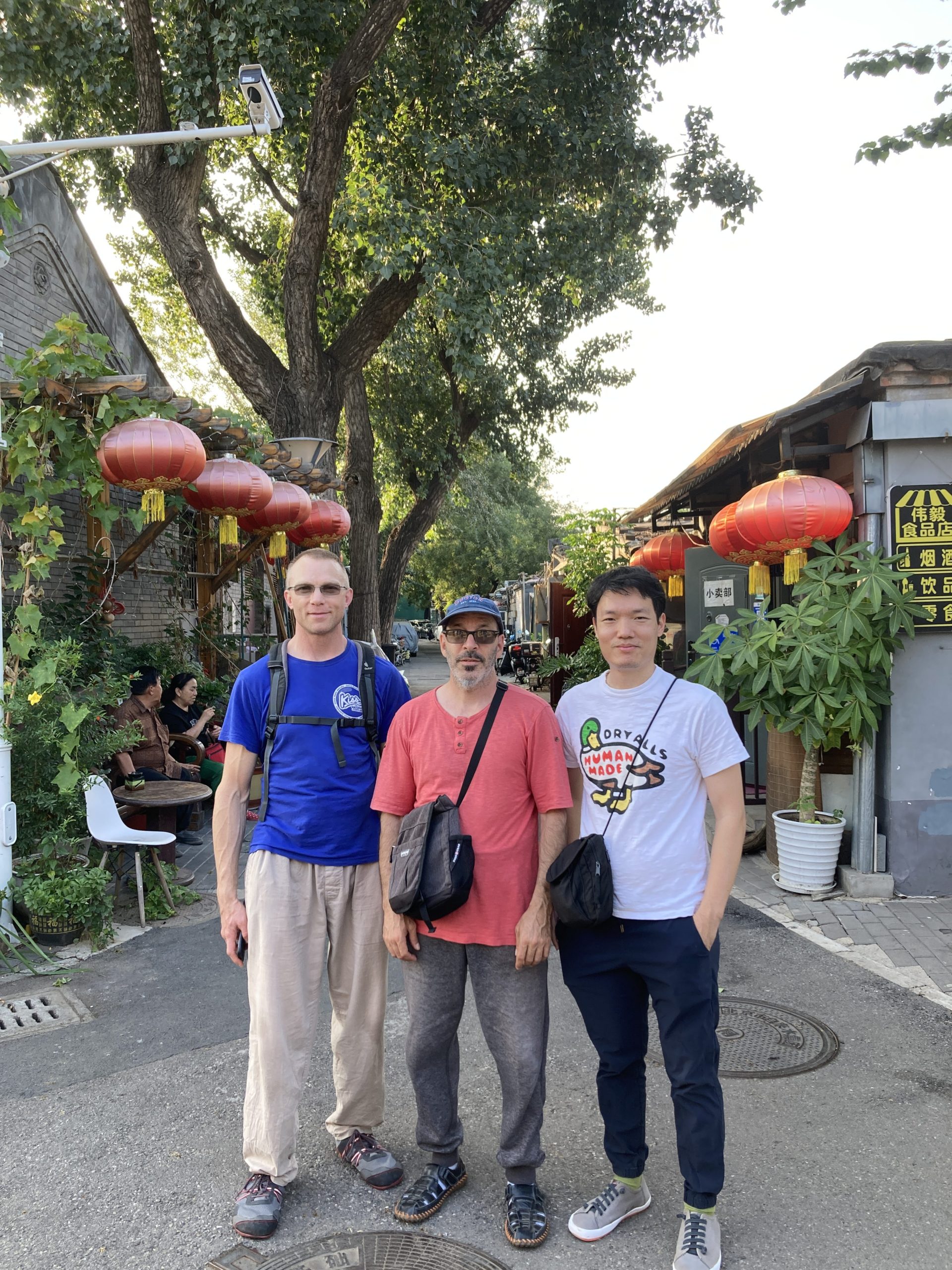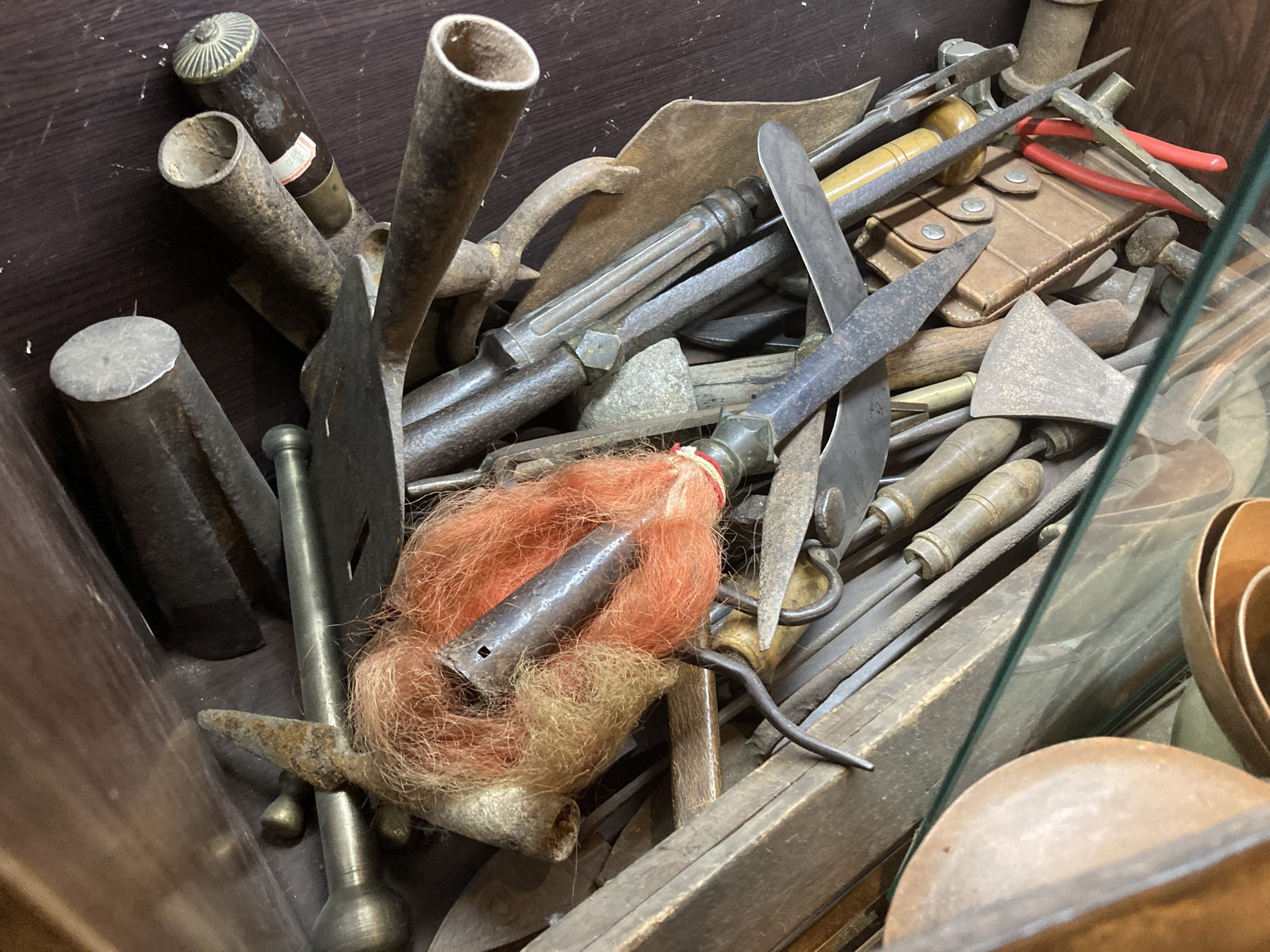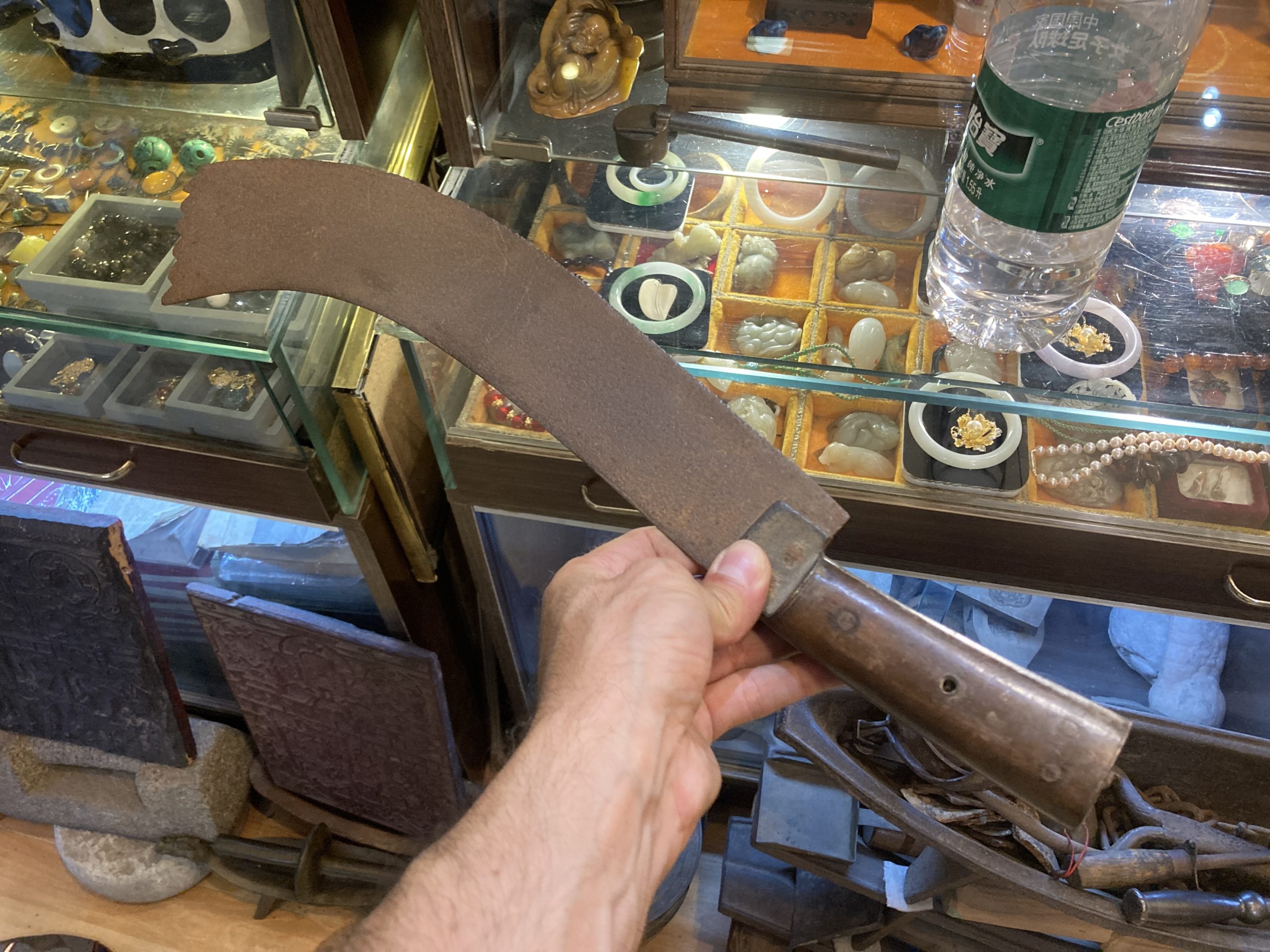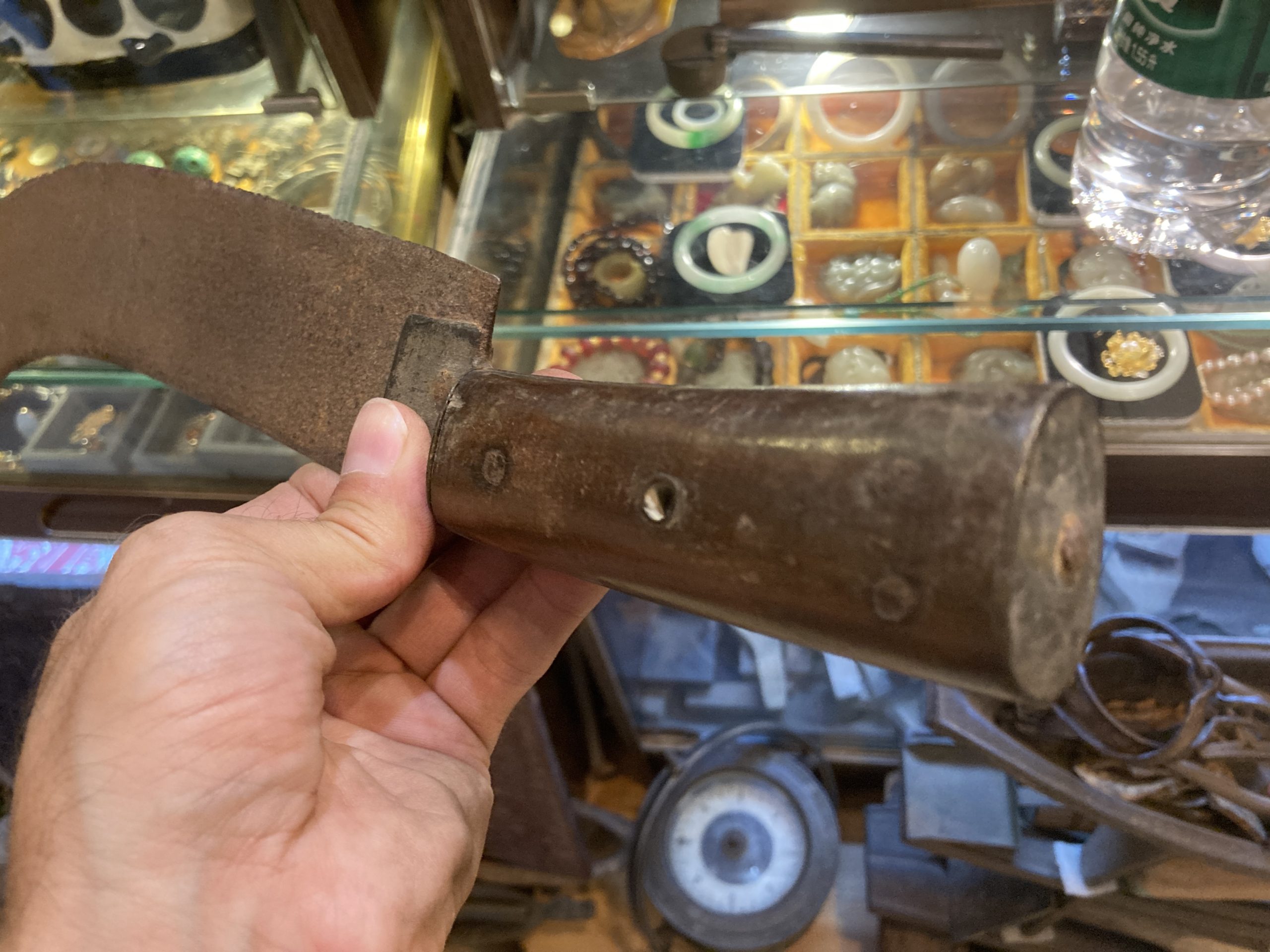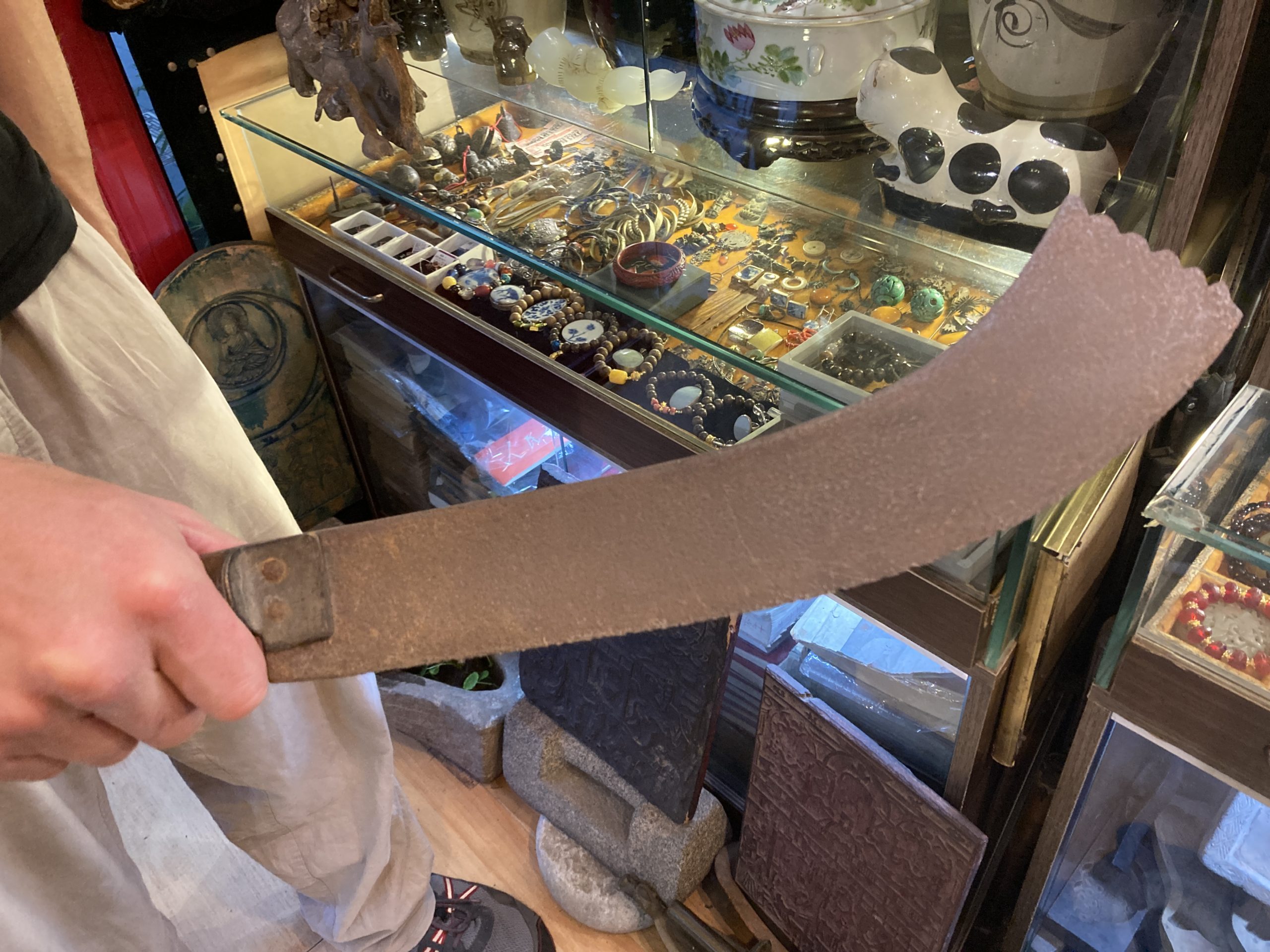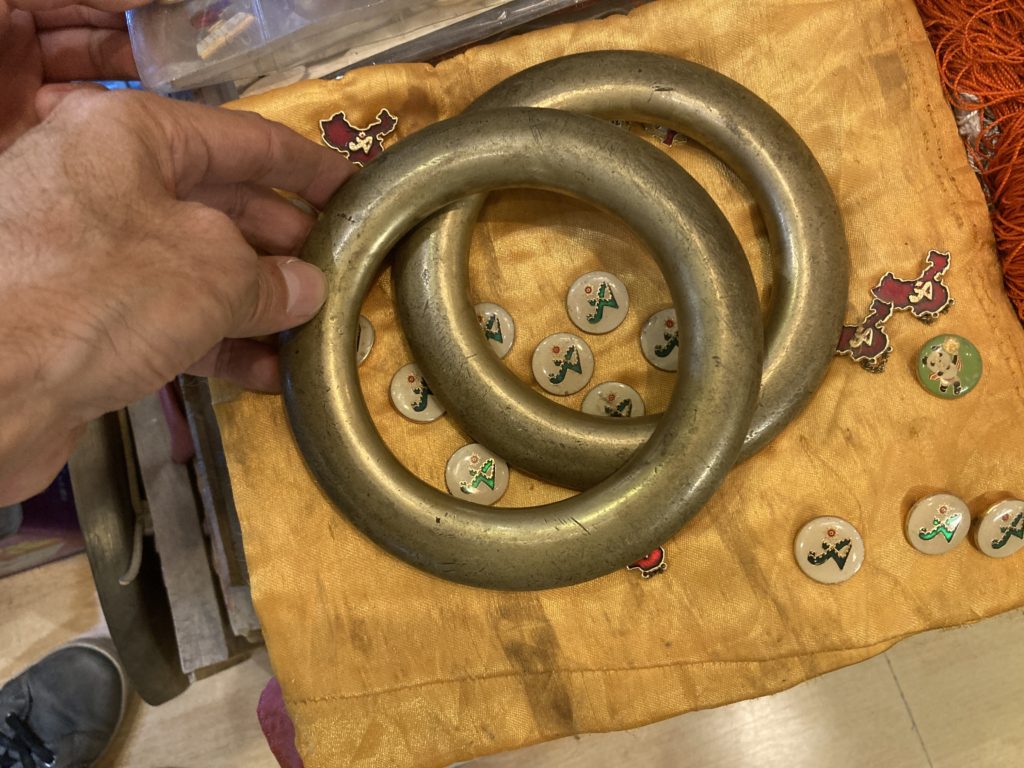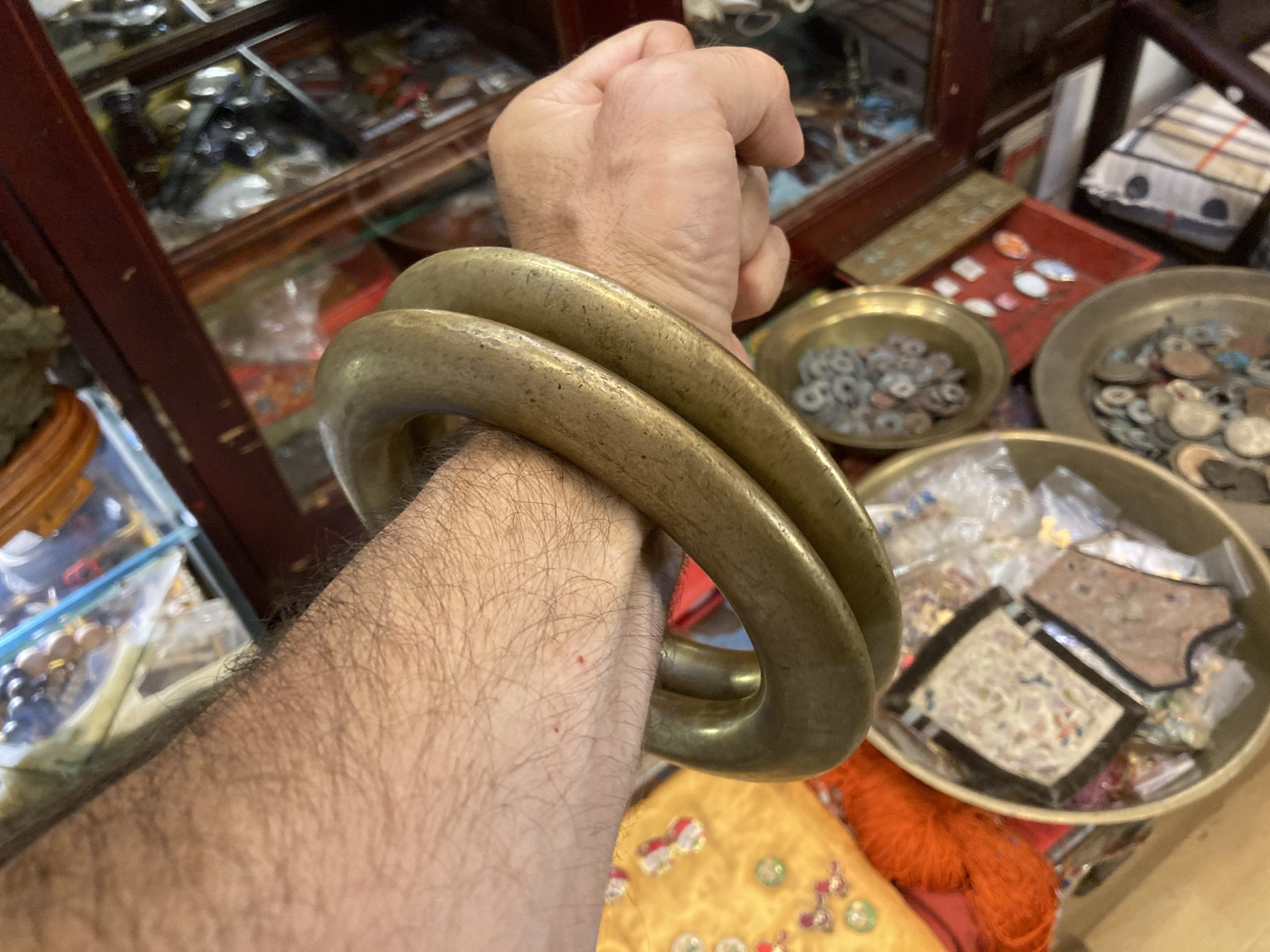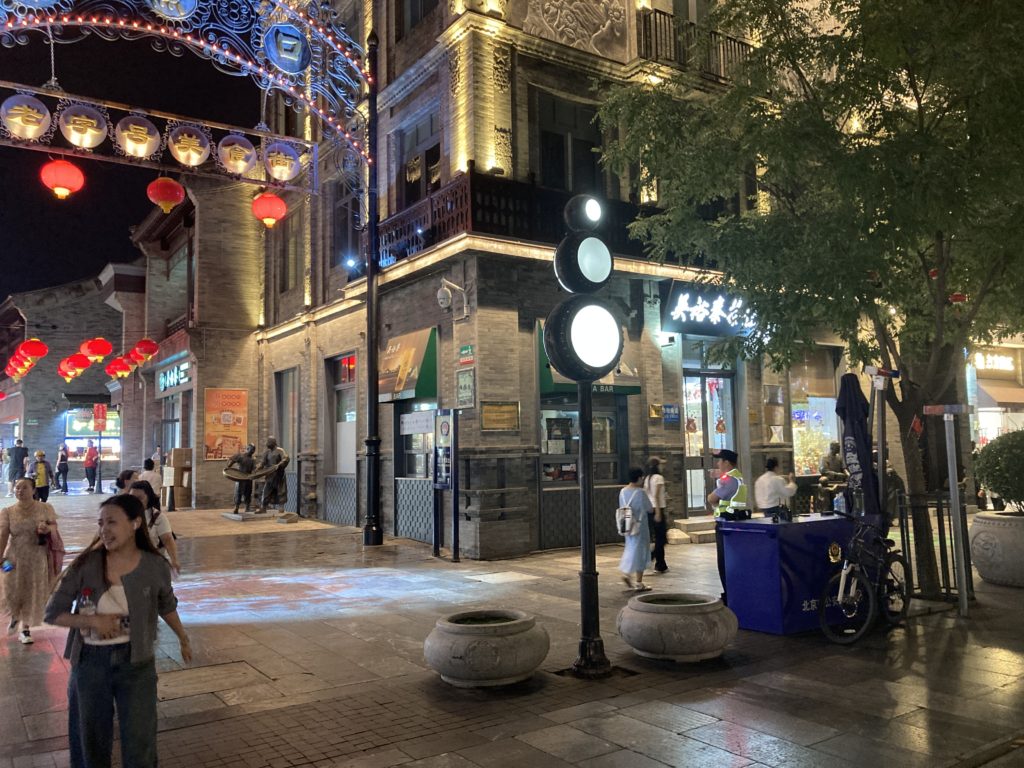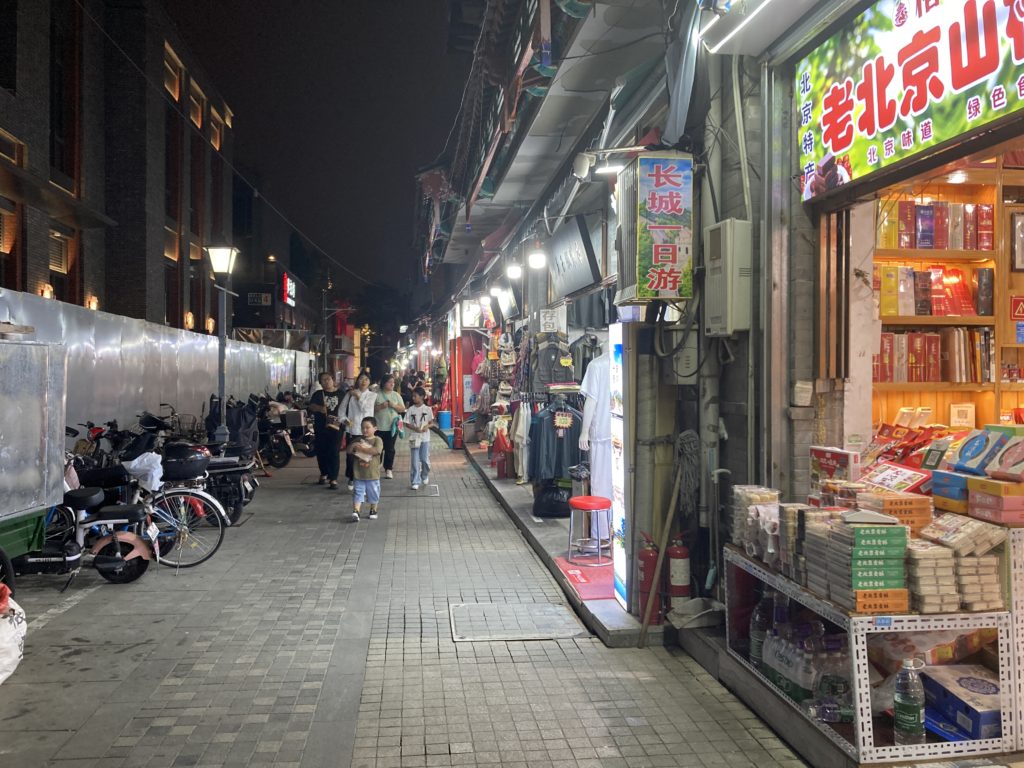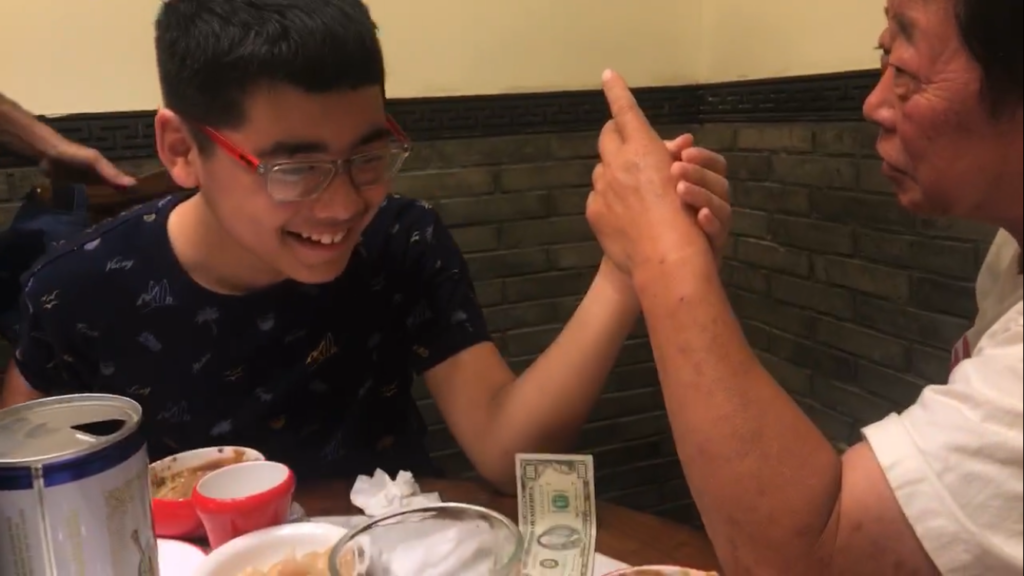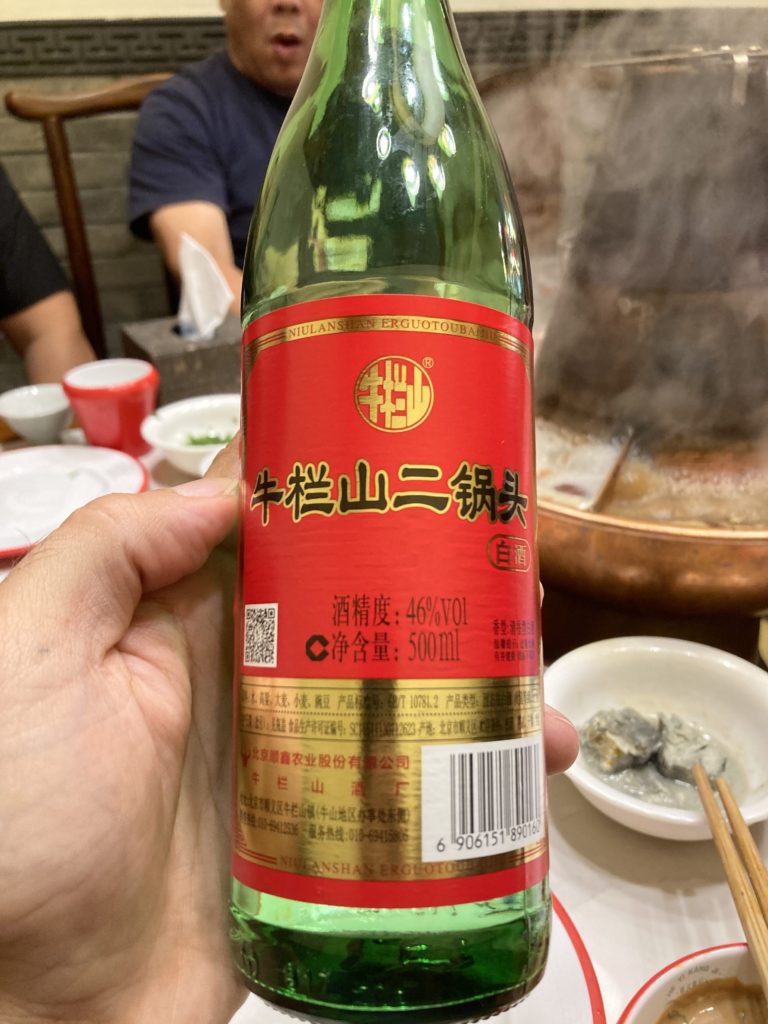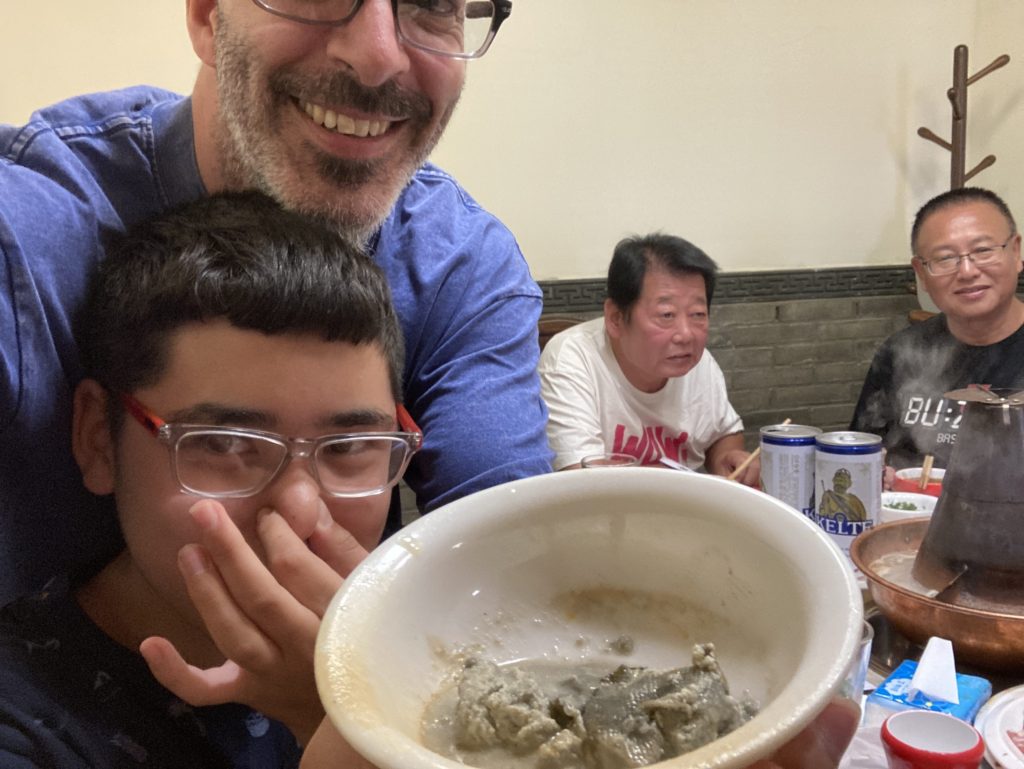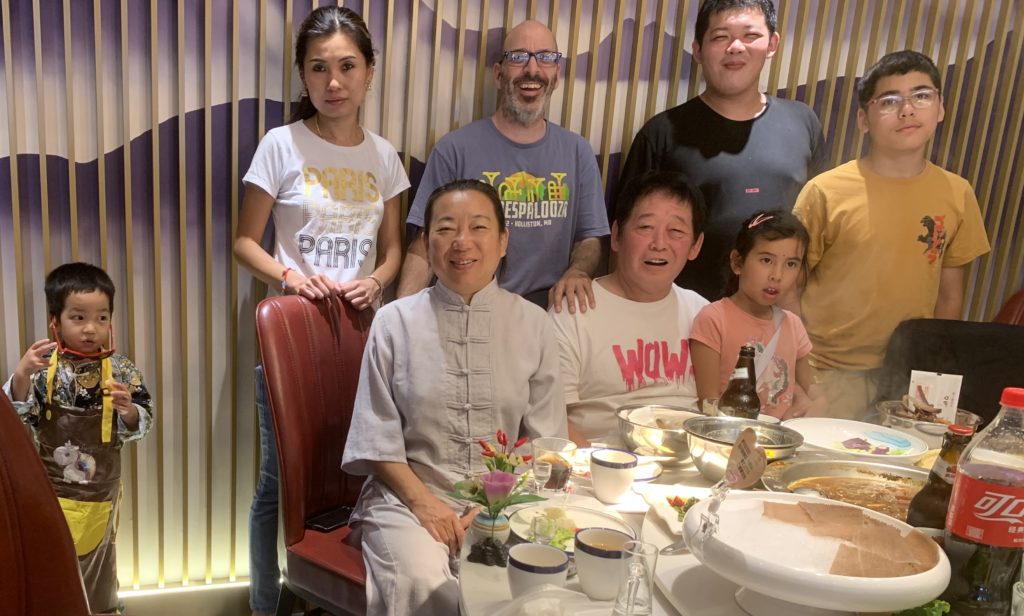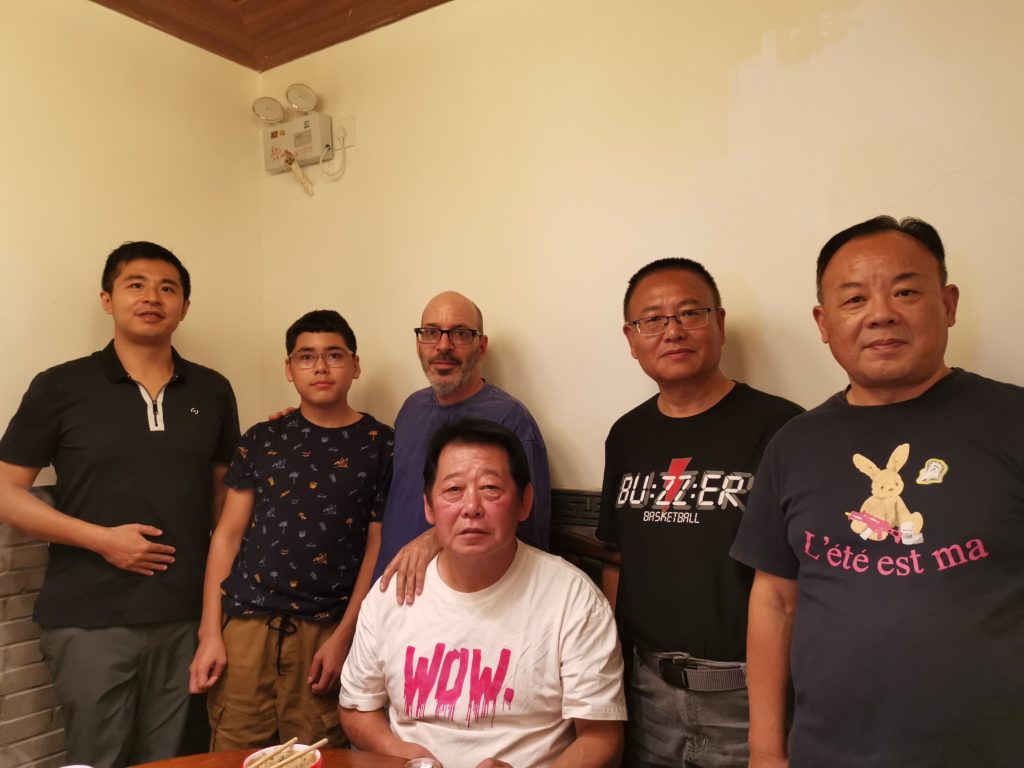After five long years we were finally able to get back to Beijing for a visit. Remembering back to before the 2008 Olympics and after it seemed at the time that Beijing was becoming overrun with foreigners. Maybe that was good (for those foreigners, and for the economy) but it seemed to make the place less fun from my perspective. When I lived there I always wanted to get away from the tourist scene. Now it seems it’s been going in the opposite direction, probably due to economic factors, as well as the collapse of travel agencies from Covid and political factors. While there are now foreign visitors to be found, it is still markedly less than I remember.
Many old streets are either improved or unrecognizable, but we did stumble into quite a number of Hutongs (antique alleyway residential areas) and much of the old Beijing, culturally is still going strong. I thought attitudes would modernize and change but from my perspective at this point that is barely blip on the radar. I won’t say it has not changed, of course it has, but the city and culture I remember has definitely not been overwhelmed.
I had the great pleasure of two rather dedicated students from this Asian side of the globe making the effort to travel to Beijing to train in the mornings and pal around in the afternoons which may have been even more fun for me than it was for them. Selfishly I am not sorry. They were also a helpful influence on my teenage son, who is finally able to start to actually see China as the last time he was here he was 8 years old.
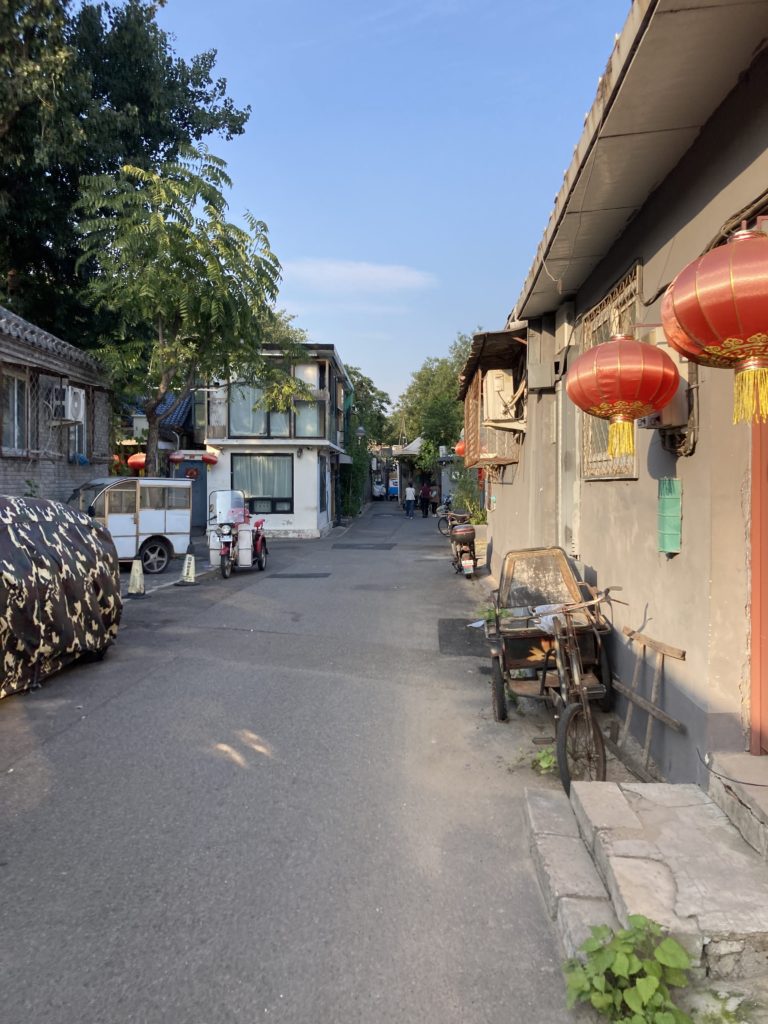 These Hutong used to be very messy, often with dirt roads and plenty of trash. At least in the area we were in the roads were paved, but some areas of course are still dirty, preserving the proper character. We also did get to have some local Hutong food from little window takeout shops just like the old days; this was my staple breakfasts when training with Feng Zhiqiang in the late 1990’s. This time it was not at all disappointing, and actually quite hot, clean and delicious. Beijing, historically favoring ‘liangshi’ or pastas and breads, essentially wheat or specifically buckwheat based diet more than rice this aspect of the local food is excellent and hearty fuel for gongfu practice.
These Hutong used to be very messy, often with dirt roads and plenty of trash. At least in the area we were in the roads were paved, but some areas of course are still dirty, preserving the proper character. We also did get to have some local Hutong food from little window takeout shops just like the old days; this was my staple breakfasts when training with Feng Zhiqiang in the late 1990’s. This time it was not at all disappointing, and actually quite hot, clean and delicious. Beijing, historically favoring ‘liangshi’ or pastas and breads, essentially wheat or specifically buckwheat based diet more than rice this aspect of the local food is excellent and hearty fuel for gongfu practice.
There is still a lot of life in these Hutongs, each like a small city such that, other than commuting many people do not have to leave the alley. Many small shops offer whatever one needs to get by.
We also visited some of my old hunting grounds for antiques and shockingly there were still some old weapons to be found. The price has definitely surged upwards as interest in cultural relics is a lot greater than it was, but I really was not expecting to find anything. Back in the day I would have bought these items for very low prices. Now it’s quite astronomical but I was just very happy to even see something interesting.
Among 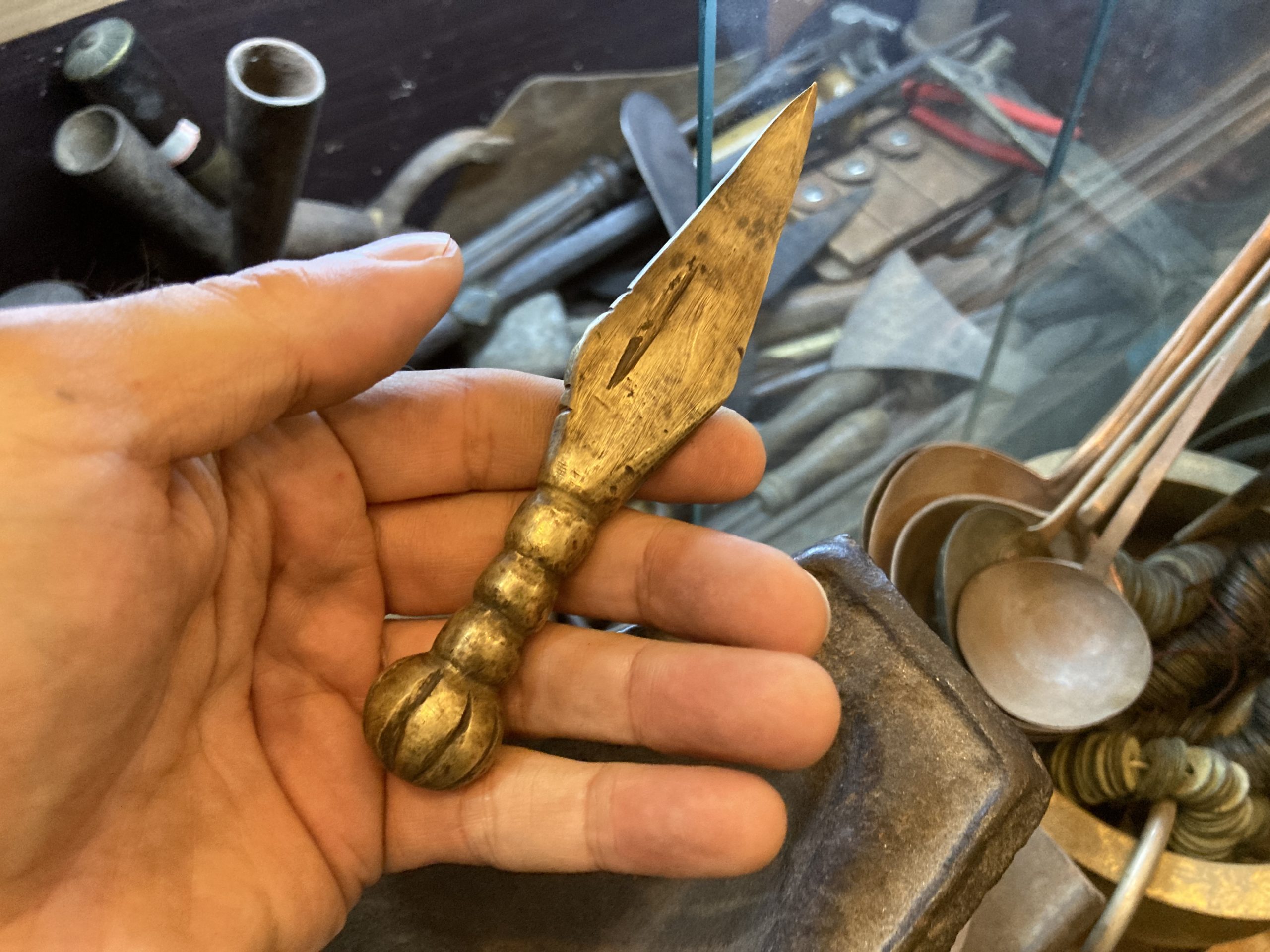 the old hand tools (also very interesting) we can see a few gems here, that spearhead with the horse hair still fixed is quite a thing. There were a bunch of other interesting pieces buried in there as well. I was not sure what this one was, maybe rope dart, or hand weapon, or who knows but I approve of it either way.
the old hand tools (also very interesting) we can see a few gems here, that spearhead with the horse hair still fixed is quite a thing. There were a bunch of other interesting pieces buried in there as well. I was not sure what this one was, maybe rope dart, or hand weapon, or who knows but I approve of it either way.
Also present were some odd decorative knives, one was a crescent with “medicine Dao” inscribed on it (for chopping herbs) and another shown here is definitely quite old but I am not certain what it’s particular shape would be optimal for. It looks on the side of weaponry though.
The real show stopper on this outing, however, was these northern martial arts brass forearm rings, which is something I never imagined I would see. These we might expect to find, or hear of in southern China relating to many southern martial systems, but in the north this is really something special to see. These are old yellow brass with a sort of flat oval contour that is asymmetrical from inner to outer shape. They will rake the bones pretty good for forearm hardening. The shop keeper had no idea what these were, but it was obvious to me. I might have bought them if it was a set of at least 4-8 for use on two arms at least. I would not have been able to resist but alas, there were only two.
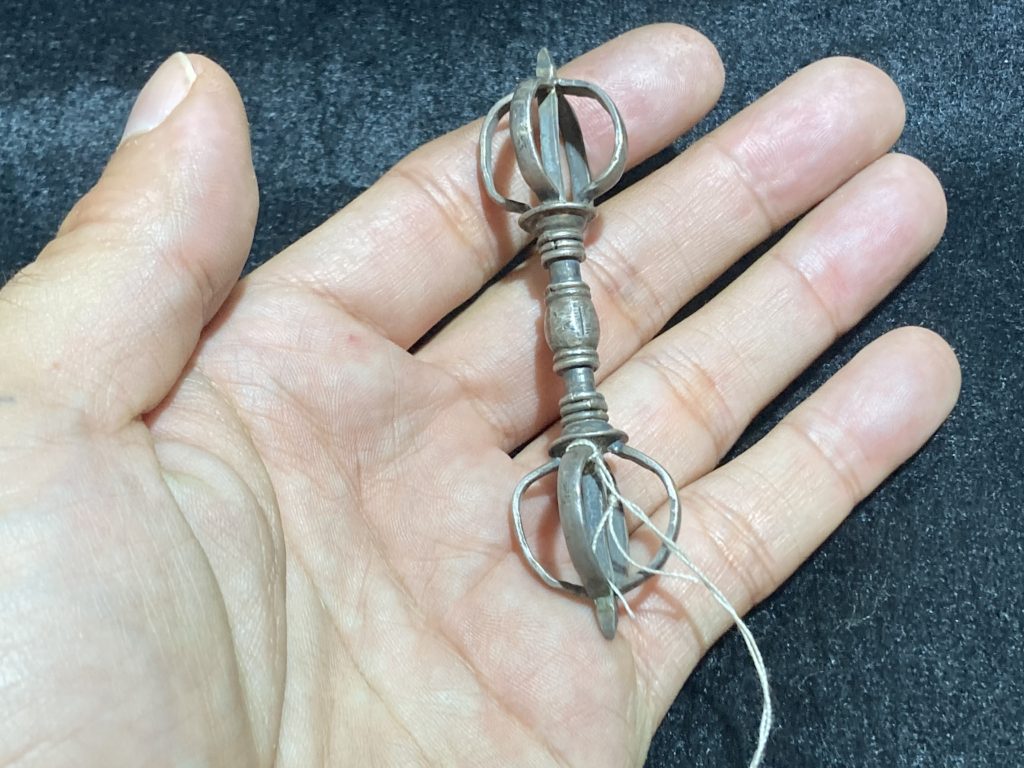 Some old Haunts specialize in Tibetan Buddhist relics. This one was one of my favorites; a very humble silver Purba from the Ming dynasty. Again, quite expensive, I might have bought it and felt like the spendy idiot some part of me is, but I smartened up for a minute.
Some old Haunts specialize in Tibetan Buddhist relics. This one was one of my favorites; a very humble silver Purba from the Ming dynasty. Again, quite expensive, I might have bought it and felt like the spendy idiot some part of me is, but I smartened up for a minute.
I am trying to not accumulate stuff these days, even the great stuff, so it’s look but don’t buy mostly. I just did not expect to see so much after all these years.
Night markets are still active with absolutely vast and varied food options. This particular night was in the middle of the week. It was what I would consider crowded for that time and it is likely it’s madness on the weekends. I am not much for crowds, I have a bit of a (reasonable) phobia. The photos here don’t show the areas we avoided, such as very active, very crowded shopping alleys I felt would take a long time to get out of if we went in.
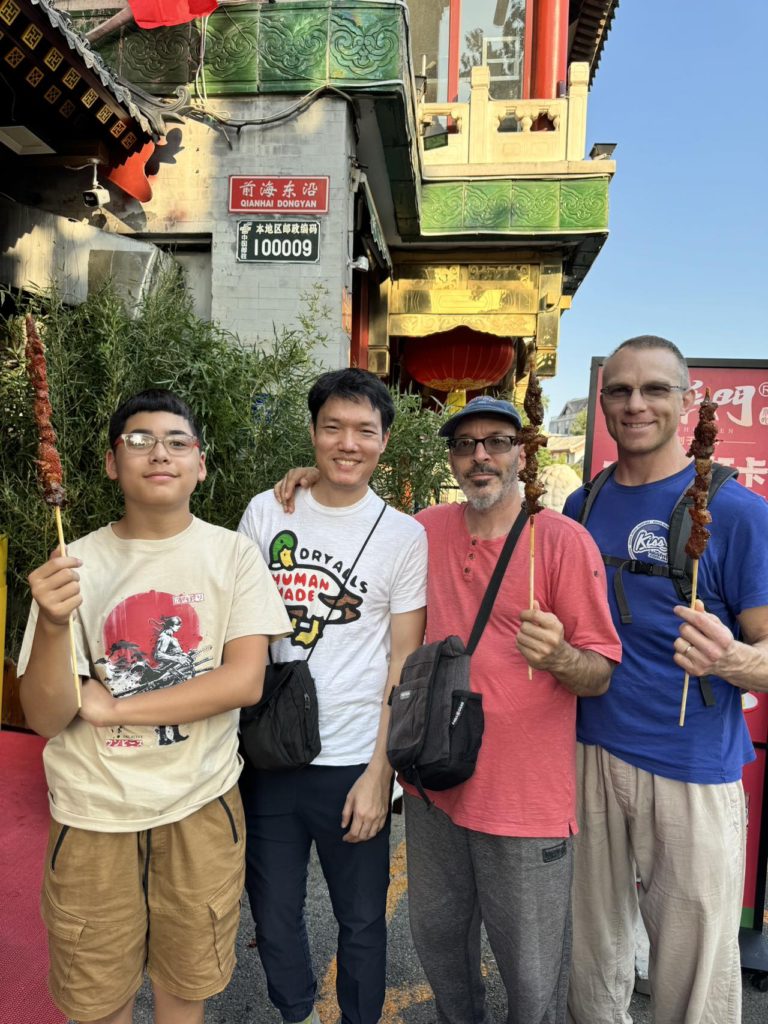 Of course no adventure in Beijing is complete without (a lot of) Yang Rou ChuanR. If its up to me we still did not have enough but it was a good start.
Of course no adventure in Beijing is complete without (a lot of) Yang Rou ChuanR. If its up to me we still did not have enough but it was a good start.
The morning training was done at the quiet areas around my father in-law’s apartment complex. The urban residential planning of Beijing and probably many other locations in
China has some great areas of attention that we don’t see much of in the west. Almost every residential complex is arranged with
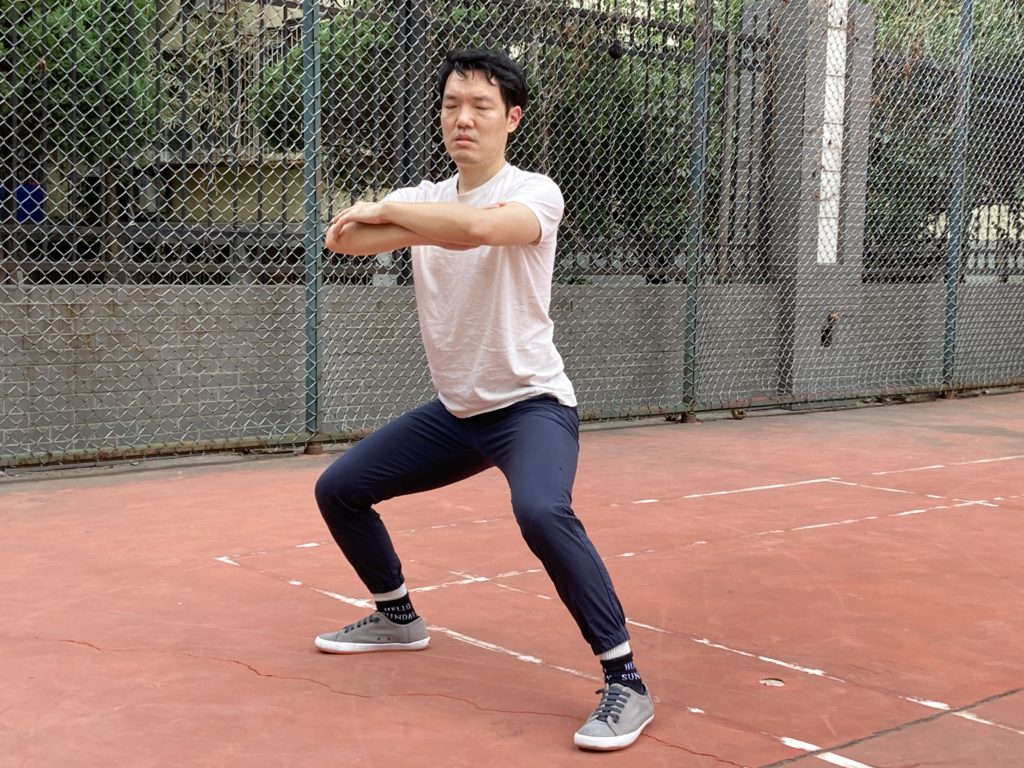
walking and exercise areas. The same is true of public parks. In the west public parks are usually either forest or sports fields. There is no space to do anything else because of course we don’t really have martial arts, health or exercise focus for t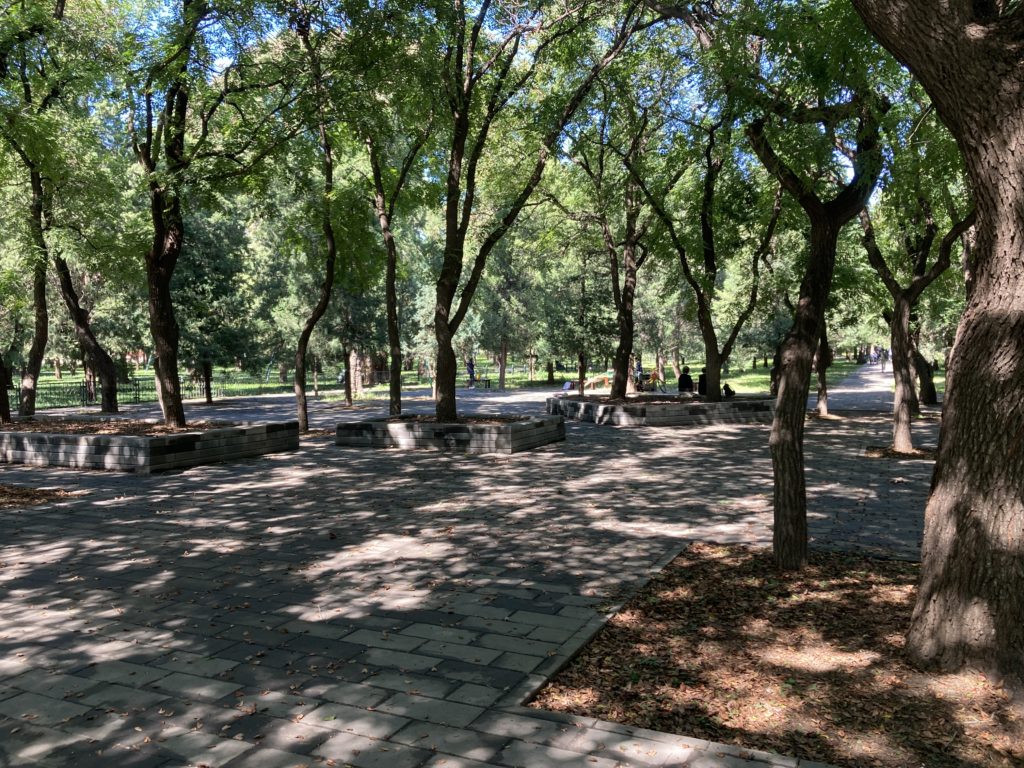 he aging population as a primary concern. In China this is a big deal. For us martial arts practitioners it is ideal. These are pics of random areas in Tiantan (temple of heaven) Park which has been very popular with gongfu practitioners over the years and no wonder why. These stone tiled shaded areas are great as well as the many packed yellow dirt areas all over the park. The place is huge and full of activity in early mornings, moreso on weekends. When I was living in Beijing it was cheap to get in. By the time the olympics was approaching they had raised the price to something like 50rmb for just foreigners to get in so I stopped going.
he aging population as a primary concern. In China this is a big deal. For us martial arts practitioners it is ideal. These are pics of random areas in Tiantan (temple of heaven) Park which has been very popular with gongfu practitioners over the years and no wonder why. These stone tiled shaded areas are great as well as the many packed yellow dirt areas all over the park. The place is huge and full of activity in early mornings, moreso on weekends. When I was living in Beijing it was cheap to get in. By the time the olympics was approaching they had raised the price to something like 50rmb for just foreigners to get in so I stopped going. 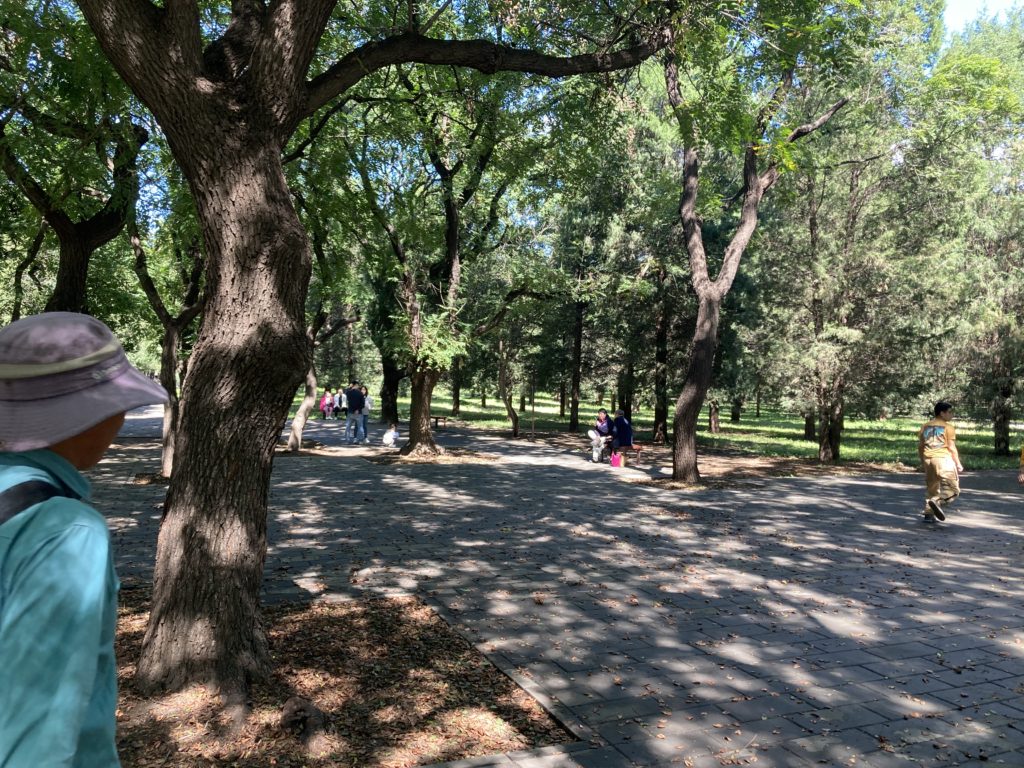 Now the price is back down to 15rmb and kids get in free. I would be there all the time at that rate, but the courtyards at the apartment complexes are often more private, without the crowd of old guys with 3 inch long cigarette ash staring at the foreigners practicing. Well, I don’t miss everything.
Now the price is back down to 15rmb and kids get in free. I would be there all the time at that rate, but the courtyards at the apartment complexes are often more private, without the crowd of old guys with 3 inch long cigarette ash staring at the foreigners practicing. Well, I don’t miss everything.
We had a fun time meeting with my friend Byron Jacobs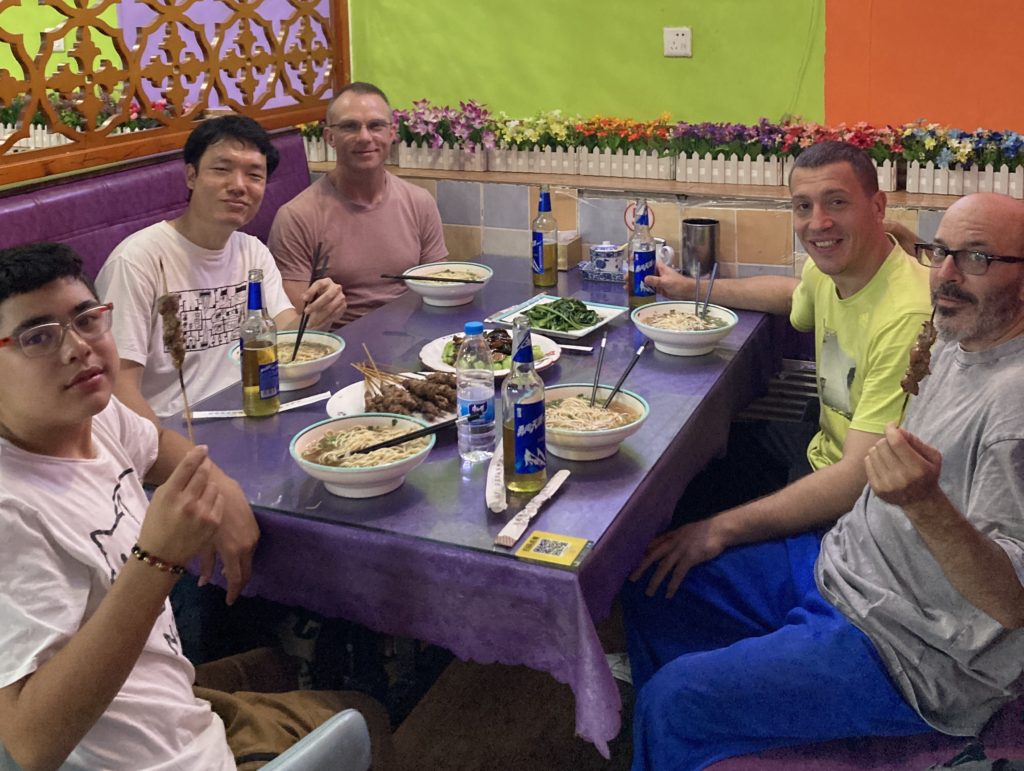 . We try to make some kind of martial arts production every time we meet as our local experience is a bit similar. We both share the goal of drowning out the noise of charlatanism that is unfortunately so prevalent by helping folks see the real item. This should be published sometime in the near future. Of course this meeting involved more Yang Rou ChuanR and beer- as is appropriate.
. We try to make some kind of martial arts production every time we meet as our local experience is a bit similar. We both share the goal of drowning out the noise of charlatanism that is unfortunately so prevalent by helping folks see the real item. This should be published sometime in the near future. Of course this meeting involved more Yang Rou ChuanR and beer- as is appropriate.
A big highlight of this trip was of course getting to visit with Chenyu, family and gongfu brothers. Chenyu was in good spirits. It’s been five years. After almost 30 years in Chen Taijiquan and 22 years in this particular line, at my age I start to feel that things reverse. 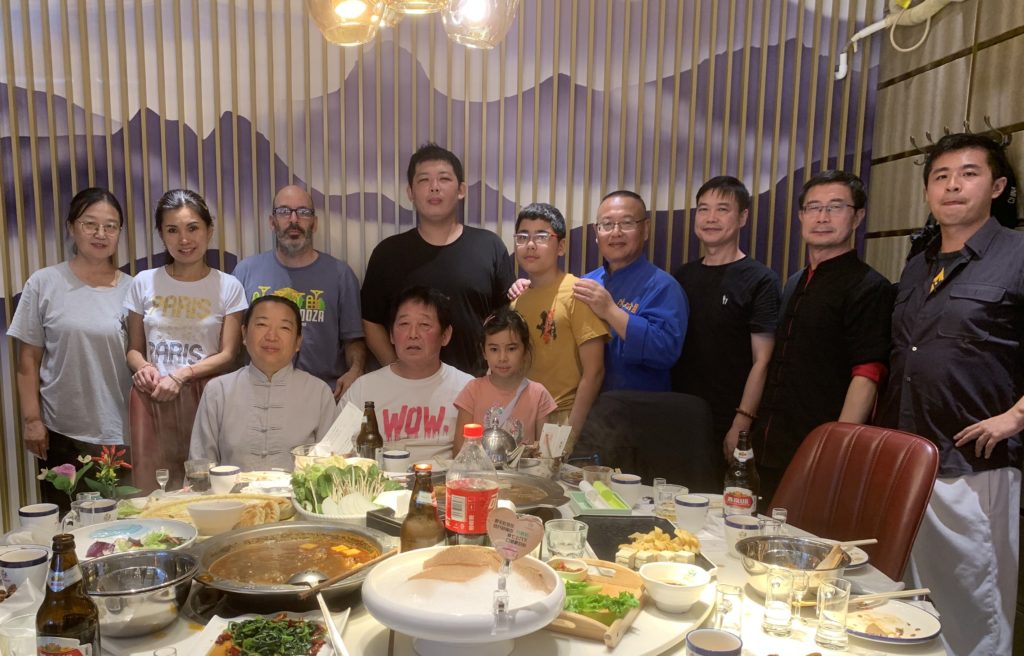 I used to feel more goal oriented, that I was on the way to achieving something. Of course that also IS true in gongfu, and we do achieve tangible results and milestones. It is also the case that when we do achieve things they end up just being the foundation for something else. Sometimes the something else is another tangible thing. Sometimes the something else is both diffuse and overwhelming. In this case it’s been a situation of achievement that put everything prior into a very different light; although I have really learned and developed quite a lot of tangible things, the last bit made me feel there was more I did not know than did know. It is as if the amount that must be developed and discovered is much larger than one can imagine when working with the mapped out path. The uncharted- is vast.
I used to feel more goal oriented, that I was on the way to achieving something. Of course that also IS true in gongfu, and we do achieve tangible results and milestones. It is also the case that when we do achieve things they end up just being the foundation for something else. Sometimes the something else is another tangible thing. Sometimes the something else is both diffuse and overwhelming. In this case it’s been a situation of achievement that put everything prior into a very different light; although I have really learned and developed quite a lot of tangible things, the last bit made me feel there was more I did not know than did know. It is as if the amount that must be developed and discovered is much larger than one can imagine when working with the mapped out path. The uncharted- is vast.
These were memorable meetings for myself and my son. Shifu was inspired. I felt like I was back in my old life in Beijing, just slightly less foolish and lacking some hair. Things still went a bit off the rails as they should.
Shifu’s generosity was in full force as he was very happy that my son was practicing and interested in applications. The betting cost me a bit but it was all worth it. What was I thinking-
It was probably my son’s fault. That attitude always makes things easier.
The involvement of local traditional fare adds to the wild card situation of these dinners. My son was somewhat coerced into eating the stinky Doufu and I admit I had a hand in assembling this humiliation but it was a necessity,  and should be for any decent young man. Such dangerous bargains can produce fantastic results though, and my son was extremely fortunate to get some actual instruction from the master.
and should be for any decent young man. Such dangerous bargains can produce fantastic results though, and my son was extremely fortunate to get some actual instruction from the master.

Some things definitely have to be felt, as they say. Inspiring interest in gongfu in youth has lifelong benefits (consequences perhaps) but which of us does not wish we had such opportunities before the age of 20? Shifu reminisced about having held my son as a toddler (in 2014) and ten years later here he was bugging people to tuishou at dinner, quite inappropriately appropriate and Shifu appreciated the enthusiasm.
It was very nice to see my old student from Boston, HuangYi who had returned to Beijing and become my gongfu brother. We are hoping he has a chance to visit Boston sometime soon. My son wanted to have a go, and with little shame outside the restaurant it was on.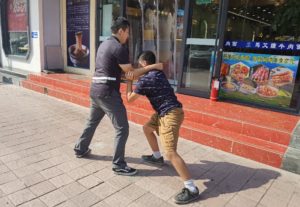
Although it’s been many productive years practicing and teaching in the US and Europe it is still a bit of heavy lifting. Chinese gongfu and Taijiquan specifically was never intended to exist in a vacuum. It was a countryside village art, and although it moved to the city in this case it’s brought that sentiment along with it. The gongfu scene in Beijing has always been about community; health, entertainment, hobby, and all of it.
It’s been popular lore in the west, and in Chinese martial arts stories as well, the idea of the lone seeker who goes to the mountain to practice, alone. This is a real situation in some cases at some points, but there is still the overarching paradigm of the village, the group and the family. Taijiquan is a contact art and a very playful art. The group is absolutely necessary for progress; we all help each other get there. The truth is, the authentic art is also rather a niche business. It is too darn bitter for most people to handle so those of us who are into it will find it lonely, eventually, especially at some level of skill with no one to share it with.
I have made a long term project out of recreating in the west the community aspect I found in Beijing and overall it has worked somewhat well. Even so, it’s a lot of effort on my part to force something into being that is just natural in Chinese society, so it’s really refreshing every few years to revisit Beijing and get a bit of a recharge and a view of how things CAN be in another social world. Again I come away deeply grateful to my teacher and family, and to destiny to send me into that moment decades back that is still producing multidimensional fruits year on year.

